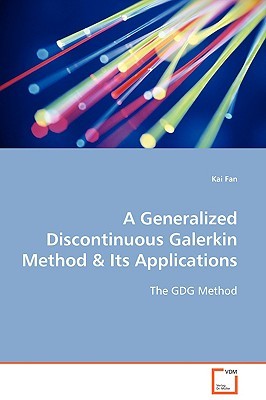
- We will send in 10–14 business days.
- Author: Kai Fan
- Publisher: VDM Verlag
- ISBN-10: 3639108043
- ISBN-13: 9783639108040
- Format: 15.2 x 22.9 x 0.4 cm, softcover
- Language: English
- SAVE -10% with code: EXTRA
A Generalized Discontinuous Galerkin Method & Its Applications (e-book) (used book) | bookbook.eu
Reviews
Description
In this book, a new Generalized Discontinuous Galerkin (GDG) method for Schrodinger equations with nonsmooth solutions is proposed. The numerical method is based on a reformulation of Schrodinger equations, using split distributional variables and their related integration by parts formulae to account for solution jumps across material interfaces. GDG can handle time dependent and general nonlinear jump conditions. And numerical results validate the high order accuracy and the flexibility of the method for various types of interface conditions. As one of GDG's application, a new vectorial generalized discontinuous Galerkin beam propagation method (GDG-BPM) for wave propagations in inhomogeneous optical waveguides is also included. The resulting GDG-BPM takes on four formulations for either electric or magnetic field. GDG-BPM's unique feature of handling interface jump conditions and its flexibility in modeling wave propagations in inhomogeneous optical fibers is shown by various numerical results.
EXTRA 10 % discount with code: EXTRA
The promotion ends in 18d.07:58:11
The discount code is valid when purchasing from 10 €. Discounts do not stack.
- Author: Kai Fan
- Publisher: VDM Verlag
- ISBN-10: 3639108043
- ISBN-13: 9783639108040
- Format: 15.2 x 22.9 x 0.4 cm, softcover
- Language: English English
In this book, a new Generalized Discontinuous Galerkin (GDG) method for Schrodinger equations with nonsmooth solutions is proposed. The numerical method is based on a reformulation of Schrodinger equations, using split distributional variables and their related integration by parts formulae to account for solution jumps across material interfaces. GDG can handle time dependent and general nonlinear jump conditions. And numerical results validate the high order accuracy and the flexibility of the method for various types of interface conditions. As one of GDG's application, a new vectorial generalized discontinuous Galerkin beam propagation method (GDG-BPM) for wave propagations in inhomogeneous optical waveguides is also included. The resulting GDG-BPM takes on four formulations for either electric or magnetic field. GDG-BPM's unique feature of handling interface jump conditions and its flexibility in modeling wave propagations in inhomogeneous optical fibers is shown by various numerical results.


Reviews